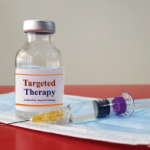NEW YORK (Reuters Health)—In daily clinical practice, following a treat-to-target (T2T) strategy in patients with rheumatoid arthritis (RA) leads to higher rates of remission compared with not following a T2T strategy, according to a longitudinal analysis of real world data.
“The results of the analysis provide direct evidence that following T2T, and particularly sustained T2T, immediately results in a higher likelihood of remission at the next visit, three months later (the longitudinal interpretation of a T2T-strategy),” Dr. Sofia Ramiro of Leiden University Medical Center, Netherlands, tells Reuters Health by email.
“Moreover, we have for the first time shown that following T2T is also efficacious in patients with established RA, while previous studies focused on the effect of T2T in patients with early RA,” she says.
The study was published in Annals of the Rheumatic Diseases.1
The findings are based on 571 RA patients from the RA BIODAM (BIOmarkers of joint DAMage) cohort who were starting or changing conventional synthetic or biological disease-modifying anti-rheumatic drugs. The patients had RA for an average of 6.5 years and were assessed every three months for two years. The total number of visits was 4,356.
At each visit, it was decided whether a patient was treated according to a T2T-strategy with 44-joint disease activity score (DAS44) remission (DAS44 <1.6) as the target. Sustained T2T was defined as T2T followed in at least two consecutive visits. The main outcome was the achievement of DAS44 remission at the subsequent three-month visit.
The correct application of T2T was found in 59% of patient visits. T2T (vs. no T2T) did not yield a higher likelihood of DAS44 remission three months later, but sustained T2T was associated with an increased likelihood of achieving DAS44 remission (odds ratio: 1.19; 95% confidence interval: 1.03–1.39).
Similar results were seen with 28-joint disease activity score-erythrocyte sedimentation rate (DAS28-ESR) remission. For more stringent definitions—Clinical Disease Activity Index (CDAI), Simplified Disease Activity Index (SDAI) and American College of Rheumatology/European League Against Rheumatism (ACR/EULAR) Boolean remission—T2T was consistently and significantly associated with remission, and sustained T2T had a more pronounced effect on remission.
“Randomized controlled trials have demonstrated the efficacy of T2T approaches in RA,” Dr. Ramiro tells Reuters Health. The current analysis, she said, provides “real-life data from cohorts without strict protocol specifications regarding choice of treatment” and supports the value of T2T in clinical practice.
“Rheumatologists should be encouraged to follow a T2T-strategy to contribute to the achievement of higher rates of remission for their patients,” Dr. Ramiro says.

